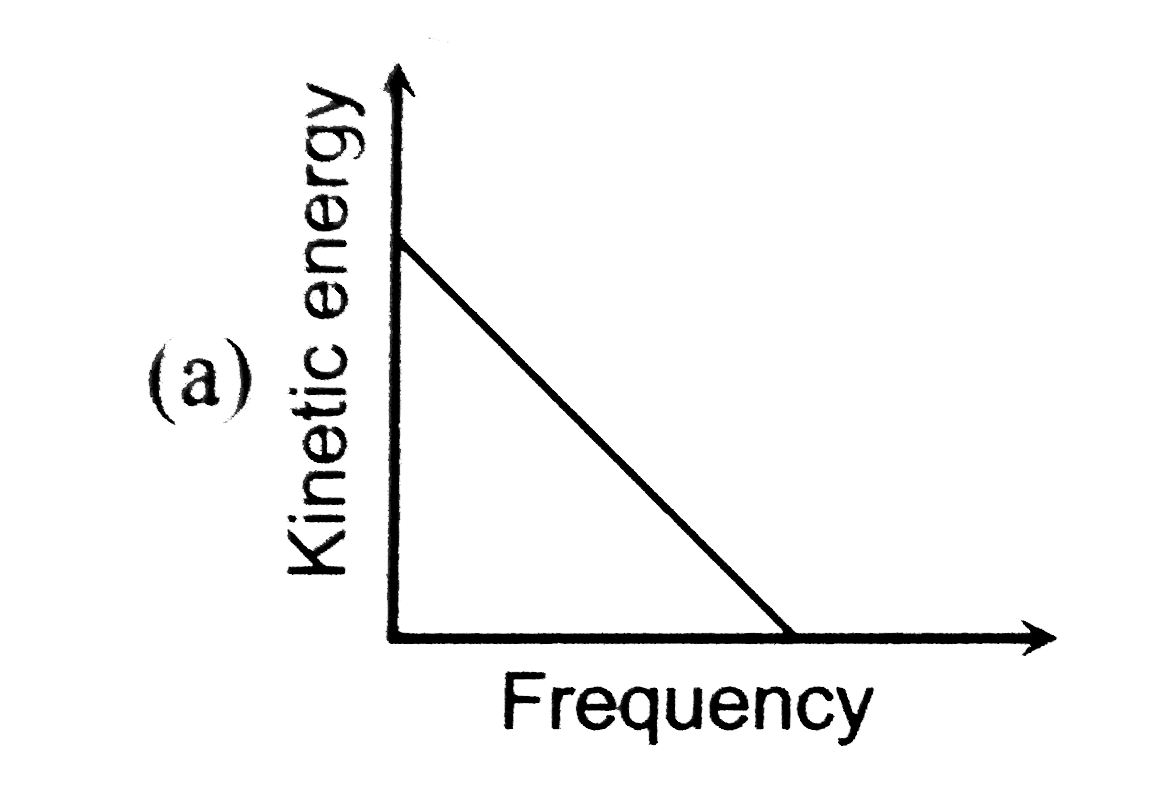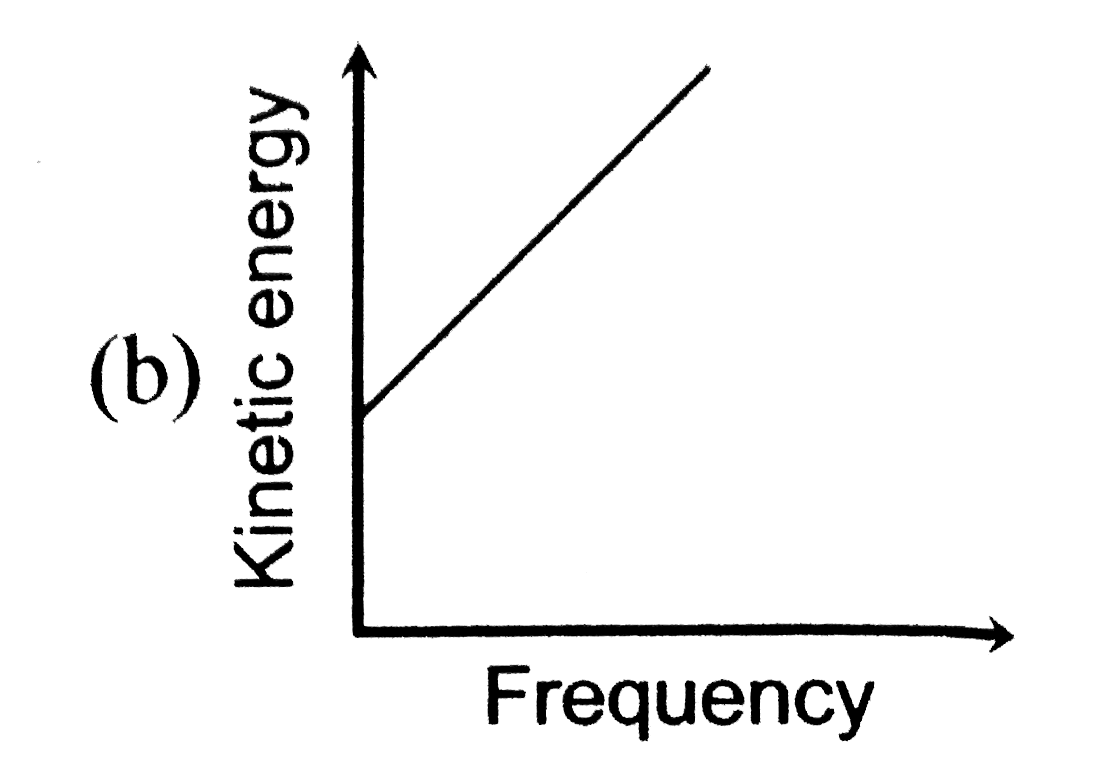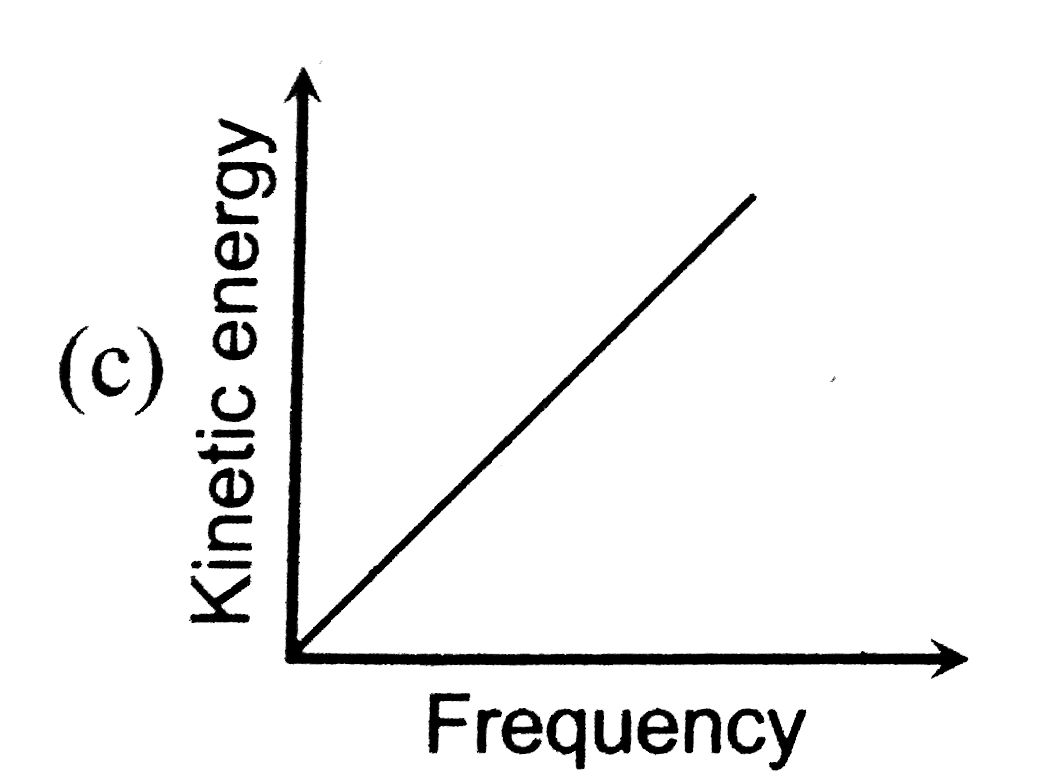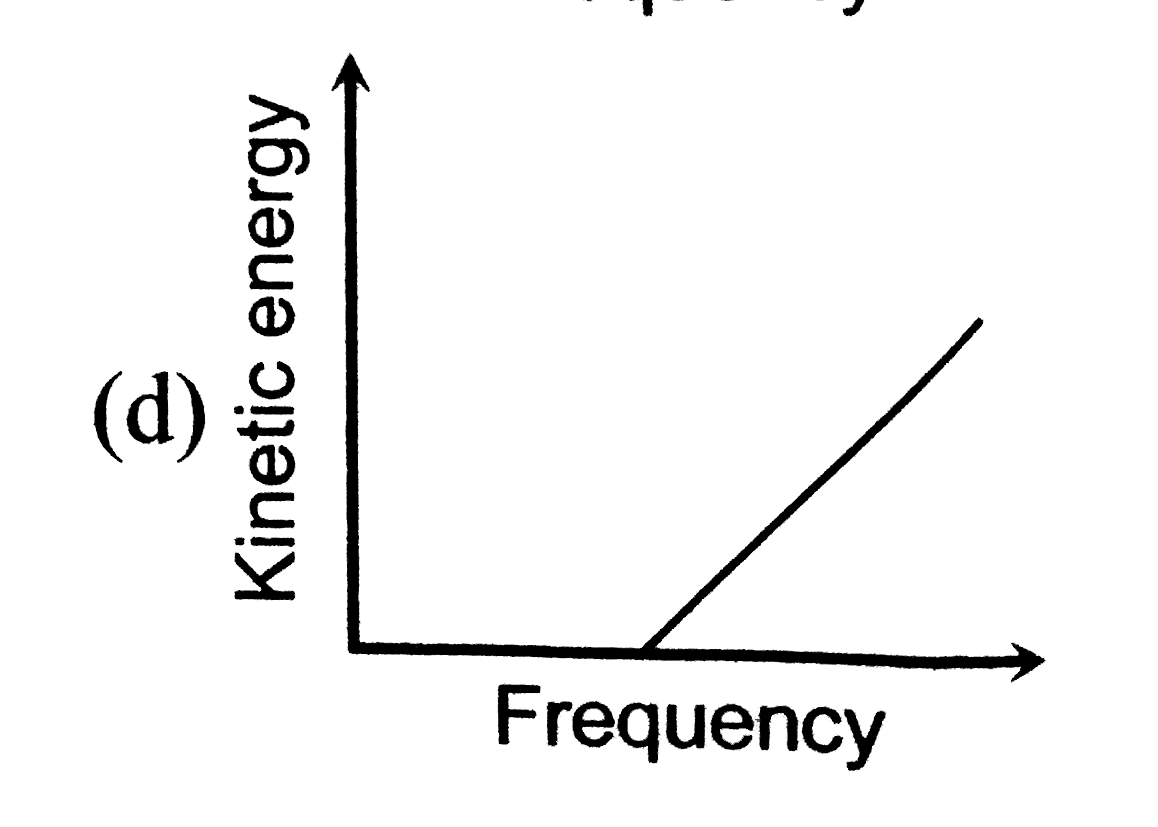Light of intensity I and frequency v is incident on a photossensitive surface and causes photoelectric emission. Justify with the help of graph, the effect on photoelectric current when
the frequency of incident radiation is increased
all other factors remain the same.
To analyze the effect on photoelectric current when the frequency of incident radiation is increased, we can follow these steps:
Step 1: Understand the Photoelectric Effect
The photoelectric effect occurs when light of sufficient frequency (or energy) strikes a photosensitive surface, causing the emission of electrons. According to Einstein's photoelectric equation:
E=hν=ϕ+KE
where:
- E is the energy of the incident photons,
- h is Planck's constant,
- ν is the frequency of the incident light,
- ϕ is the work function of the material,
- KE is the kinetic energy of the emitted electrons.
Step 2: Identify the Threshold Frequency
There is a minimum frequency, called the threshold frequency (ν0), below which no photoelectric emission occurs. If the frequency of the incident light is less than ν0, no electrons are emitted, and thus the photoelectric current is zero.
Step 3: Effect of Increasing Frequency
When the frequency of the incident light is increased while keeping the intensity constant:
- If the frequency is still below ν0, the photoelectric current remains zero.
- Once the frequency exceeds ν0, electrons are emitted, and the photoelectric current begins to flow.
- As the frequency increases further, the kinetic energy of the emitted electrons increases, but the number of emitted electrons (and thus the photoelectric current) remains constant as long as the intensity is unchanged.
Step 4: Graphical Representation
To illustrate this, we can plot a graph of photoelectric current (I) versus frequency (ν):
- On the X-axis, we plot frequency (ν).
- On the Y-axis, we plot photoelectric current (I).
1. For frequencies below ν0, the graph shows a horizontal line at I=0 (no current).
2. At ν=ν0, the current starts to increase as electrons are emitted.
3. As frequency increases beyond ν0, the current may level off, indicating that while the kinetic energy of the emitted electrons increases, the number of emitted electrons (and thus the current) does not increase significantly if the intensity remains constant.
Conclusion
In summary, increasing the frequency of the incident radiation affects the photoelectric current in the following way:
- Below the threshold frequency, no current flows.
- At and above the threshold frequency, current flows, but the increase in frequency does not significantly increase the current if the intensity is constant.
The photoelectric effect occurs when light of sufficient frequency (or energy) strikes a photosensitive surface, causing the emission of electrons. According to Einstein's photoelectric equation:
E=hν=ϕ+KE
where:
- E is the energy of the incident photons,
- h is Planck's constant,
- ν is the frequency of the incident light,
- ϕ is the work function of the material,
- KE is the kinetic energy of the emitted electrons.
There is a minimum frequency, called the threshold frequency (ν0), below which no photoelectric emission occurs. If the frequency of the incident light is less than ν0, no electrons are emitted, and thus the photoelectric current is zero.
When the frequency of the incident light is increased while keeping the intensity constant:
- If the frequency is still below ν0, the photoelectric current remains zero.
- Once the frequency exceeds ν0, electrons are emitted, and the photoelectric current begins to flow.
- As the frequency increases further, the kinetic energy of the emitted electrons increases, but the number of emitted electrons (and thus the photoelectric current) remains constant as long as the intensity is unchanged.
To illustrate this, we can plot a graph of photoelectric current (I) versus frequency (ν):
- On the X-axis, we plot frequency (ν).
- On the Y-axis, we plot photoelectric current (I).
2. At ν=ν0, the current starts to increase as electrons are emitted.
3. As frequency increases beyond ν0, the current may level off, indicating that while the kinetic energy of the emitted electrons increases, the number of emitted electrons (and thus the current) does not increase significantly if the intensity remains constant.
In summary, increasing the frequency of the incident radiation affects the photoelectric current in the following way:
- Below the threshold frequency, no current flows.
- At and above the threshold frequency, current flows, but the increase in frequency does not significantly increase the current if the intensity is constant.
Topper's Solved these Questions
- DUAL NATURE OF MATTER AND RADIATION & ATOMS AND NUCLEIBOOK - CBSE COMPLEMENTARY MATERIALCHAPTER - DUAL NATURE OF MATTER AND RADIATION & ATOMS AND NUCLEIEXERCISE - LONG ANSWER QUESTIONS (5 MARKS)
3 Videos
- DUAL NATURE OF MATTER AND RADIATION & ATOMS AND NUCLEIBOOK - CBSE COMPLEMENTARY MATERIALCHAPTER - DUAL NATURE OF MATTER AND RADIATION & ATOMS AND NUCLEIEXERCISE - NUMERICALS
6 Videos
- DUAL NATURE OF MATTER AND RADIATION & ATOMS AND NUCLEIBOOK - CBSE COMPLEMENTARY MATERIALCHAPTER - DUAL NATURE OF MATTER AND RADIATION & ATOMS AND NUCLEIEXERCISE - VERY SHORT ANSWER QUESTIONS (2 mark)
39 Videos
- CBSE EXAMINATION PAPER, DELHI REGION - 2015 (CODE NO. 55/1/1/D)BOOK - CBSE COMPLEMENTARY MATERIALCHAPTER - CBSE EXAMINATION PAPER, DELHI REGION - 2015 (CODE NO. 55/1/1/D)EXERCISE - SECTION E
6 Videos
- ELECTROMAGNETIC WAVES AND OPTICSBOOK - CBSE COMPLEMENTARY MATERIALCHAPTER - ELECTROMAGNETIC WAVES AND OPTICSEXERCISE - 1 mark question
11 Videos
Similar Questions
Light of intensity I and frequency v is incident on a photossensitive surface and causes photoelectric emission. Justify with the help of graph, the effect on photoelectric current when
the anode potential is increased
In each case, all other factors remain the same.
View SolutionLight of intensity I and frequency v is incident on a photosenstive surface and causes photoelectric emission. What will be the effect on anode current when (i) the intensity of light is gradually increased, (ii) the frequency of incident radiation is increased and (iii) the anode potential is increased? In each case, all other factors remains the same. Explain, giving justification in each case.
View Solution
Knowledge Check
In photoelectric effect on metals, an increase in the frequency of incident radiation increases:
AVelocity of emitted electronBWork function of the metaCRate of emissionDThreshold energyAccording to Einstein's photoelectric equation, the graph between the kinetic energy of photoelectrons ejected and the frequency of incident radiation is
A B
B C
C D
D
According to Einstein's photoelectric equation, the graph between kinetic energy of photoelectrons ejected and the frequency of the incident radiation is :
View SolutionDraw a plot showing the variation of photoelectric current versus the intensity of incident radiation on a given photosenstive surface.
View SolutionDraw a plot showing the variation of photoelectric current versus the intensity of incident radiation on a given photosensitive surface.
View SolutionDraw a plot showing the variation of photoelectric current versus the intensity of incident radiation on a given photosenstive surface.
View SolutionIn photoelectric emission the maximum energy of the photoelectrons increases on increasing the intensity of incident light.
View SolutionDraw a graph between intensity of light and photoelectric current for a given frequency .
View Solution
